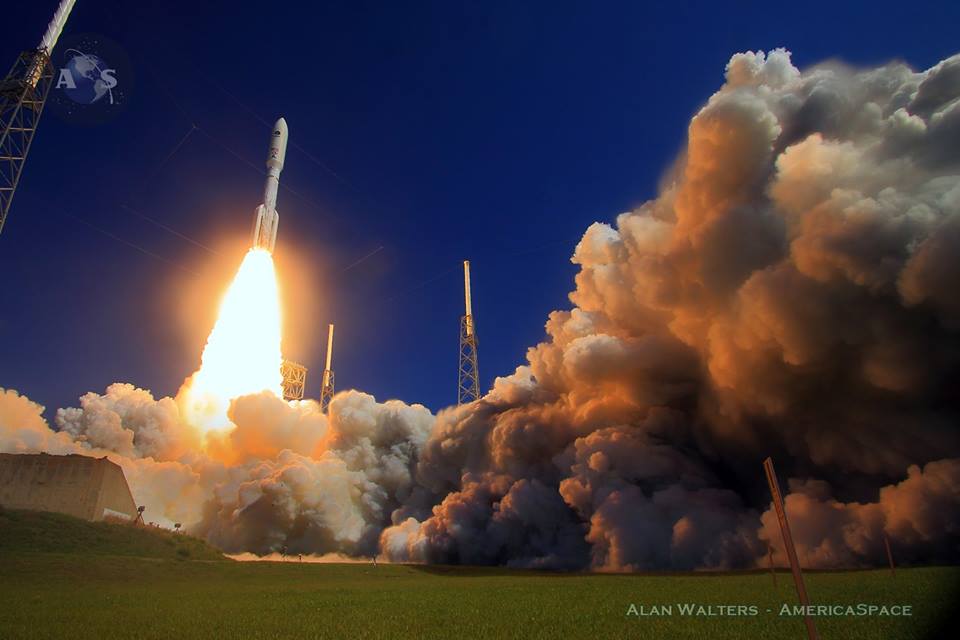
The fifth and final 7.5-ton Lockheed Martin/NAVY Mobile User Objective System satellite (MUOS-5) is headed toward geosynchronous orbit following a spectacularly thunderous launch on June 24 from Cape Canaveral onboard ULA’s most powerful version of the Atlas-V rocket.
With the final MOUS satellite moving into place we have “launched the future” of all military communications, said the NAVY.
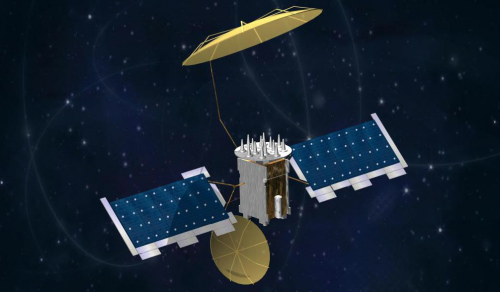
More than just satellites, the MUOS program’s diverse communications elements form a “complex orchestra” to provide far more crisp UHF capability across the services, plus a powerful broadband smartphone capability across all the services and their communications terminals.
Rarely since the last shuttle launch in 2011 has the power of Cape Canaveral, ULA, SpaceX, the NAVY, and the U.S. secret space program, all working with USAF 45th Space Wing, been so prominently on display as they have been this month.
Three Cape launches, starting June 11, have involved the most powerful ULA Delta-IV Heavy launching the largest National Reconnaissance Office intelligence Mentor spacecraft, following June 15 with the launch of a powerful SpaceX Falcon-9 carrying two large European and Asian satcoms, followed Friday by the launch of the Defense Dept.’s largest most capable multi-service communications spacecraft on the most powerful variant of the Atlas-V.
Friday’s flight marks the third of 10 planned Atlas launches this year, and the third of nine U.S. national security missions still to be launched in 2016, said Dr. Walt Lauderdale, MUOS-5 Mission Director at the Air Force Space and Missile Systems Center in Los Angeles, Calif.
The fiery launch was only the seventh Atlas-V 551 version flown in the 14-year history of the Atlas-V program, all of them fired from Cape Canaveral’s Launch Complex 41.
The 2.5 million-lb thrust, 206-foot-tall rocket, with five 380,000-lb thrust Aerojet solid rocket boosters and its 860,000-lb thrust Russian Energomash RD-180 oxygen/RP-1 engine, lifted off into sunny skies at 10:30 a.m. EDT.
The problem-free Atlas-V countdown was conducted by ULA from the company’s firing room a few miles from the pad. Key events in the flight were:
— T-minus 2.7 sec. — Ignition of the RD-180 engine.
— T-minus 1 sec. — Ignition of the five SRBs and liftoff on 2.5 million lbs thrust.
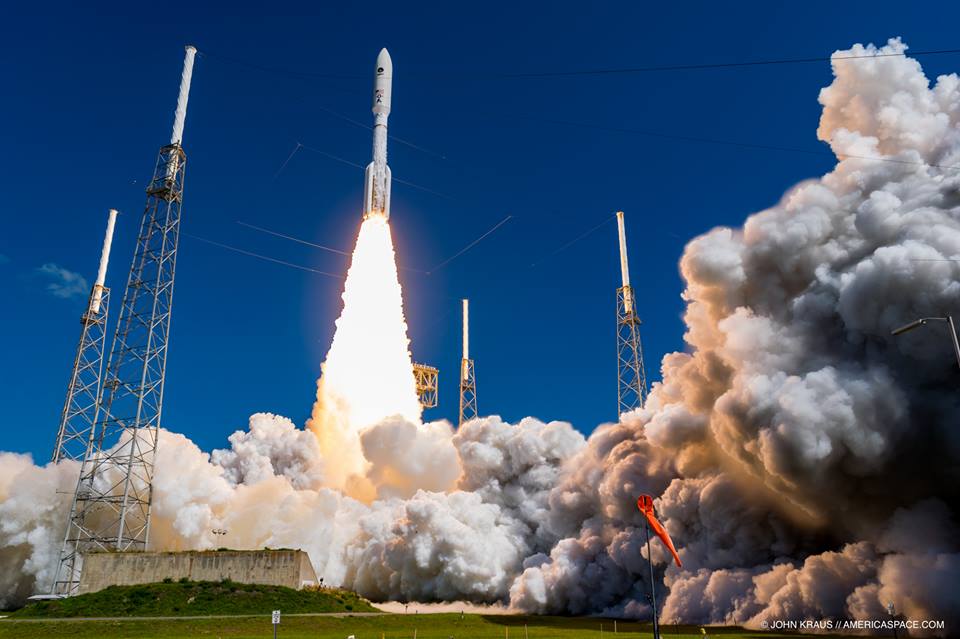
— T-plus 49 sec. — Max-Q as the vehicle went supersonic.
— T-plus 1 minute 49 sec. — RD-180 throttle down and separation of initial two Aerojet SRBs once clear of range safety restrictions.
— T-plus inute 50 sec. — Separation of the final three boosters, followed by RD-180 throttle up.
— T-plus 3 min. 28 sec. — Throttle back to 95 percent thrust for separation of 5 meter nose shroud exposing the satellite in the vacuum, then throttle back up to hold 4.6G of acceleration for the rest of first stage flight.
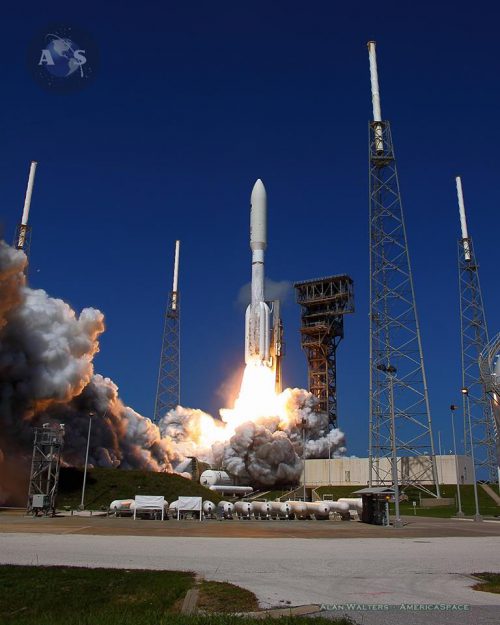
— T-plus 4 min. 26 sec. — MECO main engine cutoff of RD-180 near Antigua.
— T-plus 4 min. 32 sec. — Separation of the first stage.
— T-plus 4 min. 41 sec. — Ignition of the Centaur upper stage.
— T-plus 12 min. 28 sec. — First cutoff of Centaur upper stage.
— T-plus 20 min. 28 sec. — Second Centaur ignition as the vehicle approached the west African bulge.
— T-plus 26 min. 15 sec. — Second Centaur ignition as the vehicle started pass over Africa.
— T-plus 2 hr. 48 min. 40 sec. — Third Centaur ignition.
— T-plus 2 hr. 49 min. 9 sec. — Third Centaur cutoff.
— T-plus 2 hr. 53 min. 18 sec. — Spacecraft separation over Sumatra in a 19,280 nautical mile x 2,074 nautical mile geosynchronous orbit.
About 8 firings of the spacecraft’s own hydrazine engine will then be used to eventually put the $611 million satellite into geosynchronous orbit where it will be initially parked at 172 west long over the central Pacific for early checkout.
Strategic Command will decide where the spare should be parked for fully operational legacy UHF service. One likely position is 72 E long south of India near MUOS-4.
MUOS-5 is the fifth and final satellite that, along with four major ground stations and thousands of receivers, is revolutionizing secure communications for mobile military forces from submarines to soldiers to strategic and tactical aircraft.
“The MUOS program is a game changer” for U.S. multi-service communications, said NAVY Capt. Joe Can, NAVY MUOS Program Manager (see AmericaSpace June 23 MUOS story).
Users with MUOS terminals will be able to seamlessly connect beyond line of sight around the world and into Defense Dept’s Global Information Grid, including operations up to top secret communications and imagery.
The $7.7-billion program of satellites, major ground stations, and under radios will enable simultaneous crystal-clear voice and mission data over a secure high-speed Internet Protocol system, said Capt. Can.
The satellite carries a Harris 17.7-foot-diameter antenna to communicate with eliciting UHF users operating with older UHF spacecraft and users and a 46-foot-diameter Harris reflector for the new Wideband Code Division Multiple Access (WCDMA) capabilities operational on the first four satellites then later on MUOS-5. The satellite’s solar array will span 94 feet.
.
Be sure to “Like” AmericaSpace on Facebook and follow us on Twitter: @AmericaSpace
.
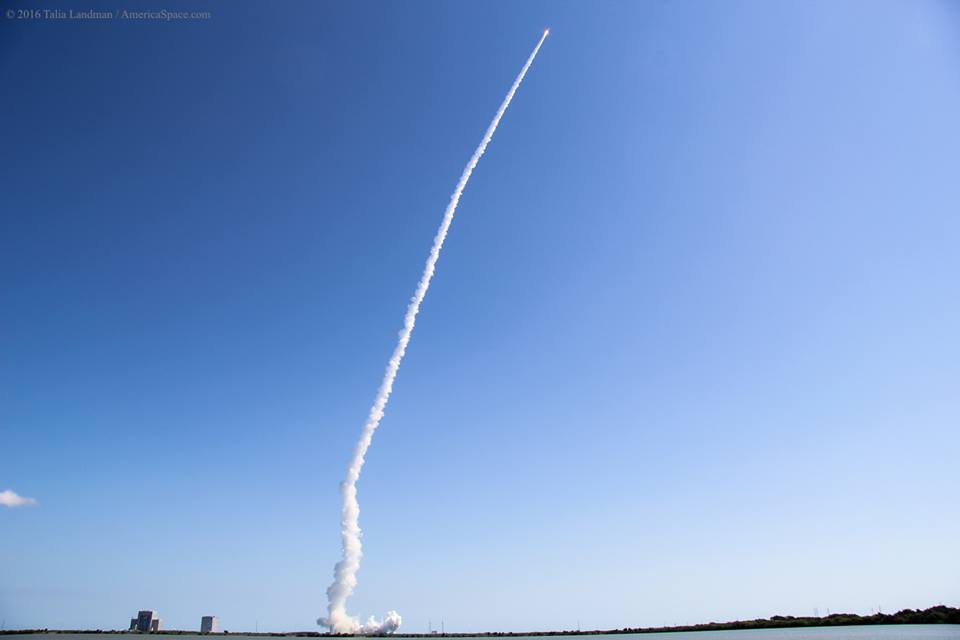
.
Missions » MUOS » Missions » MUOS » MUOS-5 »



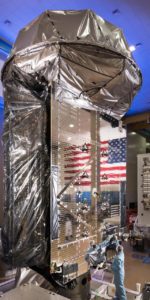

As always, Craig Covault has written an excellent article on the MUOS-5 mission. He has provided his readers with important details written in a crisp, comprehensive and thorough manner.